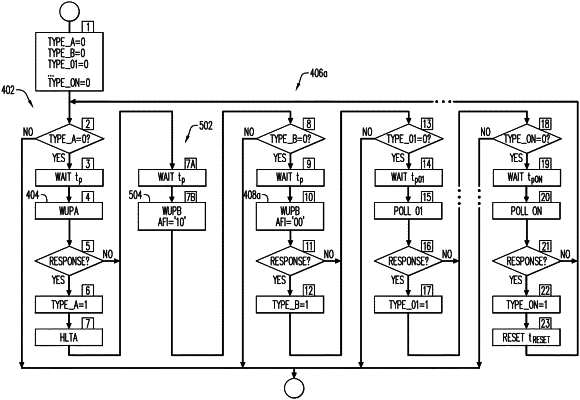| CPC G06Q 20/3278 (2013.01) [G06Q 20/102 (2013.01); G06Q 20/3224 (2013.01); G06Q 20/405 (2013.01); G06Q 20/4012 (2013.01); H04W 4/80 (2018.02)] | 14 Claims |

|
1. A method of operating a payment-enabled mobile device to gain access to a location or a service comprising:
sequentially detecting, by a contactless front-end component of a payment-enabled mobile device, short-distance radio polling signals transmitted from a non-retail contactless transaction terminal, wherein detecting the short-distance radio polling signals further comprises detecting a polling signal sequence of a Type A polling signal immediately followed by a Type B polling signal with an Application Family Identifier (AFI) value that is not “00” immediately followed by another Type B polling signal with an AFI value of “00” within a single polling cycle of the non-retail contactless transaction terminal;
determining, by the payment-enabled mobile device based on the detected polling signal sequence, that the payment-enabled mobile device is in proximity to the non-retail contactless transaction terminal;
bypassing, by a payment application running on the payment-enabled mobile device in response to the determination, a customary user verification feature;
performing, by the payment-enabled mobile device running the payment application, a transaction with the non-retail contactless transaction terminal without invoking the customary user verification feature; and
gaining, by the payment-enabled mobile device, access to at least one of a location or a service in response to performing the transaction with the non-retail contactless transaction terminal.
|